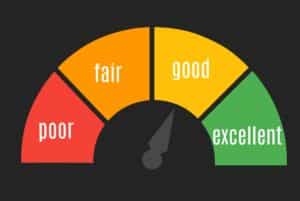
Frequently, the feedback may not align with the leader’s personal view — providing a new lens for self-awareness and growth. For example, a coaching client who recently received 360 feedback, admitted the feedback completely surprised her and she had no idea how others perceived her. It was a true learning moment, demonstrating blind spots she would not otherwise have seen. It provided a solid foundation for her coaching journey.
Although 360 feedback can be collected through structured interviews or through an online, quantitative method, there are several advantages to using the latter:
- The quantitative 360 process helps align the boss’s expectations with the leader’s understanding of those expectations, allowing the leader to concentrate on improving specific competencies that are a priority for his or her boss.
- Quantitative 360’s compare leaders to normative data over a large number of comparable leaders, allowing them to establish not only personal goals but also to see how they compare with other leaders. This provides a broad context for the developmental needs.
- Finally, if the organization is administering multiple, quantitative 360’s to a group, a group report can be produced, providing the organization input for training needs as well as letting participants see how well they stack up against their peers.
An important feature of 360 feedback is anonymity and confidentiality for all raters — other than the identified direct or indirect manager(s). In order to preserve anonymity, individual responses are always combined with responses from other people in the same assessor category (e.g. peer, direct report). The anonymous nature of the feedback creates a forum for honest feedback that they might otherwise be uncomfortable to give in person. In addition to the quantitative responses, raters are able to provide free-form feedback to the leader.
While some coaches prefer a structured interview 360, also known as a “walk around” 360, to assess and gather perceptions about a leader’s workplace behavior, the quantitative, online method of gathering feedback has other very distinct advantages. The results of feedback from a “walk around” 360 are seen through the eyes and ears of the interviewer. This feedback could reflect a subjective, possibly skewed view of a leader’s work behavior. Due to the extra time needed for scheduling and conducting the individual feedback interviews, the “walk around” 360 is more time consuming and therefore more expensive.
When organizations choose to utilize a “walk around” 360, there is no objective way to measure a leader’s behavioral change except for anecdotal evidence fraught with common performance ratings errors. On the other hand, quantitative 360’s have built-in mechanisms for measuring and assessing future behavioral change.
Most quantitative 360’s are also accompanied by a handbook for the leader that provides in-depth explanations of the behaviors, examples of productive and ineffective behaviors, and a guide to improving that behavior.
In addition to the concern of subjectivity in the “walk-around” 360, we find that the online tool improves receptivity and acceptance of the feedback. The emphasis in the online approach is to present the 360 data and allow the leaders to draw their own conclusions and insights, rather than providing judgments. For example, Bob, a coaching client, admitted to having many discussions with his boss about his poor listening skills, but did not feel compelled to learn different listening strategies. When presented with the specific findings of his quantitative 360 across all rating groups indicating low ratings on, “Listens attentively to concerns expressed by others,” Bob embraced the feedback and was open and willing to make a behavioral change. A follow-up 360 a year later showed that his behavior had, in fact, changed in a positive way, impacting his personal effectiveness and business results.
Leaders receiving quantitative 360 feedback gain insight into how others perceive them and have an opportunity to adjust behaviors and develop skills that will enable them to excel in their work and in how that work gets done. If development is the goal, leaders should consider the objective, unbiased, normalized feedback an online, quantitative multi-rater 360 provides today!
Susan Hugo
Senior Talent Development Consultant and Assessment Specialist
CCI Consulting

